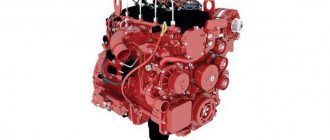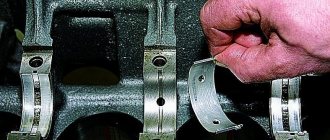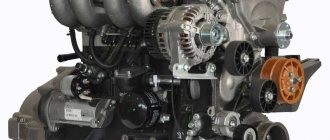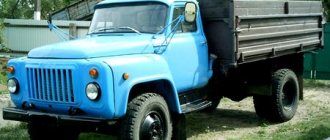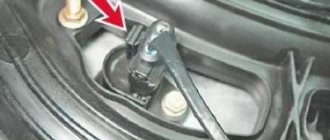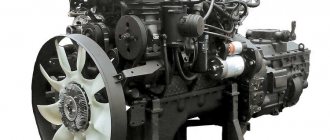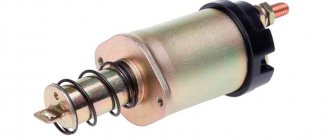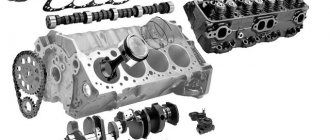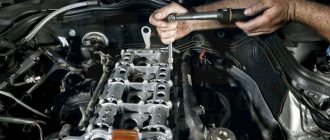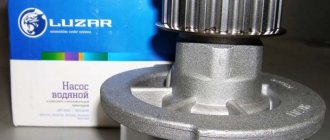Maintainability
Toyota engine overhaul has been mastered by many car services. A complete replacement of the CPG and attachments brings the failed engine back to its original parameters.
Cylinder block liner at a car service center. A sleeve cooled in liquid nitrogen. Car enthusiasts fix many problems with their own hands. There are no problems with spare parts. Some of them are interchangeable with other brands of engines. For example, the fuel pump for 13T is suitable from a Y series engine. And the electronic switch and ignition coil are from a VAZ 08/09.
Thus, we can safely say that the T-series internal combustion engines are repairable.
In conclusion, it should be noted that no matter what car the T engine is installed on, it always confirms Japanese quality and durability, subject to operating rules.
Tired of paying fines? There is an exit! Forget about fines from cameras! An absolutely legal new product - Traffic Police Camera Jammer, hides your license plates from the cameras that are installed in all cities.
- Absolutely legal (Article 12.2);
- Hides from photo and video recording;
- Suitable for all cars;
- Works through the cigarette lighter connector;
- Does not cause interference to radios and cell phones.
>Mitsubishi 4B11T engine
Typical problems
The 4D56 diesel engines have a Denso fuel system, which is one of the most reliable among manufacturers. The resource of a fuel injector in a common rail system is approximately 150,000 km, it all depends on the conditions in which it operates and on the quality of the diesel fuel used.
Due to the use of low-quality diesel fuel or due to old age, several problems may arise:
- difficulty starting the engine or inability to start the car;
- stalls almost instantly after starting the engine (about 10 seconds);
- a feeling of loss of power and increased diesel fuel consumption;
- strange “shots” in the area of the cylinder block.
From this we can assume that the fuel injector has the following malfunctions:
- the filter mesh in the nozzle itself is clogged;
- nozzle nozzle stuck;
- the hole that sprays the fuel becomes clogged with impurities in low-quality fuel.
Reliability, problems and repair of the 4B11T engine
A new engine was created especially for the Mitsubishi Lancer Evolution 10, which replaced the legendary 4G63T. The new engine was called 4B11T, it also had 4 cylinders and a displacement of 2 liters, but there was also something new. Here they used a semi-closed aluminum cylinder block with cast iron liners, its height is 220 mm, the inter-cylinder distance is 96 mm, there are no balance shafts. This block was equipped with oil injectors, a crankshaft with a piston stroke of 86 mm, forged Mahle pistons with a diameter of 86 mm and a height of 33.35 mm, as well as connecting rods 143.75 mm long. As a result, we got 2 liters of volume and a compression ratio of 9. The weight of the stock pistons is 546.2 grams, the weight of the standard connecting rods is 572.5 grams, the crankshaft weighs 16.6 kg.
On top of the block is a new 16-valve aluminum head with a MIVEC continuously variable valve timing system on both camshafts. The size of the intake valves is 35 mm, the exhaust valves are 29 mm, the diameter of the valve stem is 5.5 mm. It is necessary to check and, if necessary (the valves are noisy), adjust the valves every 60 thousand km. Valve clearances (cold engine): intake 0.17-0.23 mm, exhaust 0.27-0.33 mm. The characteristics of the stock Evo 10 camshafts are as follows: phase 252/224, lift 9.7/8.58 mm. The timing system uses a chain. A throttle valve with a diameter of 60 mm is installed at the inlet. The performance of the stock injectors is 540 cc/min. An MHI TD05H-152G6-12T turbine with an intercooler is installed as a supercharger. Boost pressure up to 1.54 bar. The exhaust has a diameter of 57 mm.
A version of the Evo X FQ-330 was sold in Britain, the engine of which was modified by HKS. They replaced the intercooler, intake tract, downpipe, catalyst, catback with their HKS ones and installed software from Ecutek. This made it possible to increase power to 329 hp. at 6500 rpm, and increase torque to 437 Nm at 3500 rpm. This seemed to them not enough, and they created a version of the Evolution X FQ-360, where they installed a new fuel pump and Ecutek firmware. This allowed the power to be increased to 359 hp. at 6500 rpm, torque 492 Nm at 3500 rpm. There was also a more powerful version of Evo - FQ-400. It was based on the FQ-360 and featured an intercooler, intake tract, modified turbo, 76mm exhaust and ECU tuning. As a result, the power reached 408 hp. at 6500 rpm, and torque is 542 Nm at 3500 rpm. That's not all, there was an even more powerful modification - FQ-440. Here they installed an intake from Janspeed, replaced the turbine with an HKS one, installed new injectors, an exhaust manifold from Janspeed and the entire exhaust from them. This Evo develops 446 hp. at 6800 rpm, its torque is 559 Nm at 3500 rpm.
In addition to all these evil 4B11 turbos, simpler options were also produced, especially for the Mitsubishi Lancer Ralliart X. This engine has an MHI TD04HL-15T turbine, which blows up to 1.25 bar. There is also a small intercooler, narrow piping, a different air filter box, the location of the battery and its own exhaust have been changed. The engine is the same in terms of hardware, only the attachments have been changed.
Since this engine was developed jointly with Hyundai and Chrysler, it is very similar to the Hyundai G4KH and many people think they are the same, but this is not the case. They have different cylinder blocks (Hyundai has an open and less durable one), completely different heads (for example, Hyundai has direct injection), G4KH pistons are worse, connecting rods are less durable, even the TD04-19T turbine is different. But in general the engines are related. In addition, there is a naturally aspirated version 4B11, which is distinguished not only by the absence of a turbine, but also by the block, the absence of oil nozzles, all the internals, head, intake, and exhaust.
At the beginning of 2021, production of the Lancer Evo X was completed, and along with it, production of the 4B11T ceased.
Problems and disadvantages of Mitsubishi 4B11T engines
1. The revs fluctuate, but it doesn’t move. You may have a stretched timing chain; cars built before 2009 are especially susceptible to this. It is necessary to check and replace the chain with the entire set. 2. Engine noise, tripping. On the Evo 10, the problem is in the piston rings, which, when destroyed, begin to dangle in the cylinder, bend the spark plug electrode, hit the piston and valves, then fly out into the exhaust pipe, breaking the turbine. But this applies to cars with tuning, so it cannot be called a disease. 2. Crack in the exhaust manifold. This also applies to tuning cars, but these are the majority. There is a risk of cracks appearing in the manifold and on the hot part of the turbine. In addition, check the condition of oil coolers, which become dirty over time. You also need to monitor the condition of the plastic drive belt rollers, which wear out quickly. Usually they are replaced with ones adapted from Hyundai or regular new ones. In general, this is a good engine with a normal service life, it drives well without tuning and with regular and high-quality maintenance, it does not cause problems. The resource can exceed 250 thousand km. There are very few cars with high mileage, perhaps 300 thousand km is not the limit.
Engine 4D56 and its maintenance
Find spare parts for the 4D56 engine
The 4D56 engine is installed on Mitsubishi Pajero, Pajero Sport, L200, L300 and L400 (DelicaSpace Gear) cars, and the subname D4B* (D4BA - naturally aspirated, D4BF - turbocharged engine and D4BH - turbocharged with intercooler) is produced under license in Korea and installed on cars Hyundai Galloper, Terracan, Starex, Porter, H100.
The engine has an overhead camshaft, with a timing belt drive and fuel injection pump, and the valves are driven by rocker arms. To increase balance and reduce vibration, it uses two balancer shafts driven by a separate toothed belt.
4D56 engine maintenance
The 4D56 engine requires timely and competent maintenance. The most common malfunction is a broken timing belt due to its untimely replacement or destruction of the tension roller bearing. The belt with roller needs to be changed at a mileage of 60 tons.
km, while taking into account the nature of traffic in large populated areas (traffic jams). Together with the timing belt, it is necessary to change the balancer shaft belt (with roller), because it is located next to the timing belt and if it breaks, it can get under it with all the ensuing consequences.
“Breaking” valve rocker arms do not always “save” the valves themselves from damage.
A common malfunction of this motor is the jamming of one of the balancer shafts (usually the upper one) due to lack of lubrication; in this case, repair of the seats and bushings with complete disassembly of the engine is required.
The use of aluminum in the cylinder head and design features make this engine prone to overheating and therefore vulnerable during dynamic acceleration and prolonged operation at high speeds under load. Accordingly, it is necessary to carefully monitor the cooling system and the thermal coupling (viscous coupling) of the fan, which has a tendency to fail.
Cracks and burnouts of the prechambers are often found in these diesel engines due to violations of the fuel equipment adjustments. Injection pump refers to distribution type pumps with mechanical control.
One of the differences between the fuel systems of Japanese diesel engines is the different design of the injectors and the fuel return line. The injectors do not have fittings for connecting rubber hoses for draining excess fuel (“return”), but are connected to each other by a single metal line, sealed with aluminum rings and attached to the injectors with nuts.
Tuning the 4B11T engine
Stage 2
It is very easy to increase power on your Evo X, just install a cold intake, remove the catalyst, replace the connecting rod bolts with ARP or install normal H-shaped connecting rods, buy a boost controller and configure the control unit. This will give 370+ hp. You can leave the stock connecting rods, but their breakage will be a matter of time. Add a pump like the DW65C, 1000cc injectors, blow-off, oil churner, 76mm exhaust and tune up. You'll get about 400 horses at the flywheel. This is the optimal combination of speed and reliability, which is how most Evolution 10s drive. A Garrett GTX3071R with a good tuning manifold, a large intercooler, 3.5-inch pipes, and a pump like the AEM 320 lph will help you get more power. Also needed are Cosworth MX1 shafts and valve springs, 1300cc injectors, AEM fuel rail, ARP studs. After tuning, such a motor will easily show 400+ hp. on wheels. You can install a GTX3076R and get 500+ horsepower on wheels. Stock pistons and block hold this power and even more, but for reliability it is better to switch to forging, properly prepare the cylinder head, and do it as it should.
Ralliart Stage 2
You can add power to the Lancer Ralliart X engine by replacing the filter with K&N, removing the catalyst, or installing a catless exhaust on a 76 mm pipe and flashing the brain. This will give about 300 hp. and dynamics at the level of the stock Evolution X. If this is not enough, then you need to remake it for this very Evo, replacing the intake with the same one from the Evo X along with an intercooler, with pipes, with an oil cooler, with a TD05H turbine and with a manifold. The intake is noticeably different and you will have to completely redo it or immediately install a tuning cold intake. The release also requires modification or, again, installing a rollless one with a diameter of 76 mm. After the conversion, you can follow the path of tuning the Evo 4B11T: cold intake, 76 mm exhaust, ARP connecting rod bolts, boost controller and firmware. With all this, your Ralliart will drive like most Eviks with a chip exhaust.
ENGINE RATING: 5-
Repair dimensions of crankshaft D-240, 243, 245
The crankshaft of the D-240 engine of the MTZ-80, MTZ-82 tractor is full-support, steel (has five main and four connecting rod journals, the working surfaces of which are hardened by high-frequency currents. The connecting rod journals of the D-240 crankshaft have cavities for centrifugal oil purification. The cavities are closed threaded plugs, which must be of the same group for the engine (the group number is stamped on the end of the plug) so that the balancing of the crankshaft is not disturbed. While turning, the liners are locked with tendrils stamped on them, which are included in the milling in the bearing beds in the block and connecting rod D-240. On the outer surface of the liner, the factory trademark and size are affixed, and on the inner surface of the tendril (protrusion) - the mark ( + or - ) of the liner group in height (the liners are assembled so that one of them has a "+" sign on the antennae, and the other "-" or both without marking). The holes in the upper halves of the main liners coincide with the oil supply channels in the block. The clearance in the bearings of a new or repaired MTZ-80, MTZ-82 tractor engine is within the range of 0.065...0.123 mm for connecting rods and 0.070...0.134 mm for main bearings. When the gap in the connecting rod bearings increases to 0.25 mm and the ovality of the journal is more than 0.06 mm or in the main bearings, respectively, to 0.3 and more than 0.1 mm, the D-240 crankshaft journals are ground to the appropriate repair size. The axial movement of the crankshaft of the D-240 engine is limited by the stops of the fifth journal (permissible in operation - 0.5 mm), the axial movement of the lower connecting rod head is permissible 0.7 mm.
Nominal sizes of crankshaft journals D-245, 243, 240
Shaft neck diameter, mm. main / connecting rod 1H - 75.25-0.083-0.101 / 68.25-0.077-0.096 2H - 75.00-0.083-0.101 / 68.00-0.077-0.096
Nominal dimensions of MTZ crankshaft bearing shells
Inner diameter of the liner, mm. main journal / connecting rod journal BN1 - 75.25-0.033-0.010 / 68.25 +0.025-0.010; BN2 - 75.00-0.033-0.010 / 68.00 +0.025-0.010; Crankshafts, the connecting rod and main journals of which are made according to the size of the second rating, have an additional designation on the first cheek: 2K - main journals of the second rating; 2Ш - connecting rod journals of the second rating; 2KSh - connecting rod and main journals of the second rating. Repair dimensions of crankshaft journals D-240, 243, 245 Shaft journal diameter, mm. main / connecting rod D1 - 74.75-0.083-0101 / 67.75-0.077-0.096 P1 - 74.50-0.083-0.101 / 67.50-0.077-0.096 D2 - 74.25-0.083-0101 / 67.25-0.077-0.096 P2 - 74.00-0.083-0.101 / 67.00-0.077-0.096 D3 - 73.75-0.083-0101 / 66.75-0.077-0.096 P3 - 73.50-0.083-0.101 / 66.50-0.077-0.096 D4 - 73.2 5-0.083 -0101 / 66.25-0.077-0.096 P4 - 73.00-0.083-0.101 / 66.00-0.077-0.096 The tightening torque of the main bearing bolts should be 200...220 Nm. In this case, the shaft should rotate smoothly, without jamming, with a torque of no more than 3 Nm. When checking the tightening of the main bearing cap bolts for additional tightening, the torque value should not exceed 240 Nm. When assessing the condition of the liners by inspection, it should be borne in mind that the surface of the antifriction layer is considered satisfactory if there are no scuffs, chipping of the antifriction material, or inclusions of foreign materials on it. >

